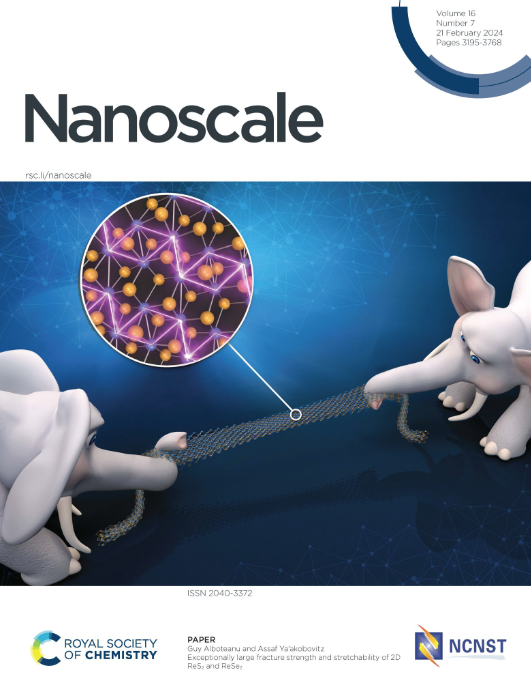Nanometrology assisted chemical fabrication: direct laser writing of porphyrins onto complex surfaces.
IF 5.8
3区 材料科学
Q1 CHEMISTRY, MULTIDISCIPLINARY
引用次数: 0
Abstract
The association of operando monitoring methodologies with micro and nanoscale surface modification strategies has recently been shown to enable the preparation of complex yet highly precise organic functional surfaces. While promissing, such demonstrations have so far been limited to model systems, consisting on minimally functionalized aryl radicals. With a growing demand for more sophisticated surfaces, bearing multiple functions, a demonstration of the generality of the strategy to chemically complex moieties and surfaces is deeply needed. In this work, we aim to fill this gap by preparing tetraphenyl porphyrin derivatives modified to become radical precursors that can be activated with light. Operando optical monitoring is used to non-invasively analyze their grafting behavior in different conditions, optimizing the routes to enable modification of inert glass surfaces with high precision (30 atto L). We demonstrate that the methodology is compatible with direct laser writing technologies, and use it to prepare photophysically active surfaces with high resolution. We demonstrate that the instrinsic emissive properties of Tetraphenylporphyrin derivatives are well preserved, and that several surface modifing steps can be sequentially stacked, leading to the preparation of surfaces with mulitple functions. By controlling the microscale distribution of chemical groups with different photophysical properties, we demonstrate that complex chemical designs can be readily and reliably implemented. This work therefore shows that light activated radical pathways can be broadly used to modify surfaces, opening interesting new perspectives for the implementation of functional materials.纳米计量辅助化学制造:直接激光在复杂表面上书写卟啉。
operando监测方法与微纳米级表面修饰策略的关联最近被证明能够制备复杂但高度精确的有机功能表面。虽然有希望,但到目前为止,这种演示仅限于模型系统,由最低功能化的芳基自由基组成。随着对承载多种功能的更复杂表面的需求不断增长,迫切需要对化学复杂部分和表面的策略进行通用性论证。在这项工作中,我们的目标是通过制备四苯基卟啉衍生物修饰成可以被光激活的自由基前体来填补这一空白。Operando光学监测用于无创分析其在不同条件下的接枝行为,优化路线,以高精度(30 atto L)修饰惰性玻璃表面。我们证明了该方法与直接激光书写技术兼容,并使用它来制备高分辨率的光物理活性表面。我们证明了四苯基卟啉衍生物的内在发射性质得到了很好的保留,并且几个表面修饰步骤可以依次堆叠,从而制备出具有多种功能的表面。通过控制具有不同光物理性质的化学基团的微尺度分布,我们证明了复杂的化学设计可以容易和可靠地实现。因此,这项工作表明,光激活的自由基途径可以广泛用于修饰表面,为功能材料的实现开辟了有趣的新视角。
本文章由计算机程序翻译,如有差异,请以英文原文为准。
求助全文
约1分钟内获得全文
求助全文
来源期刊

Nanoscale
CHEMISTRY, MULTIDISCIPLINARY-NANOSCIENCE & NANOTECHNOLOGY
CiteScore
12.10
自引率
3.00%
发文量
1628
审稿时长
1.6 months
期刊介绍:
Nanoscale is a high-impact international journal, publishing high-quality research across nanoscience and nanotechnology. Nanoscale publishes a full mix of research articles on experimental and theoretical work, including reviews, communications, and full papers.Highly interdisciplinary, this journal appeals to scientists, researchers and professionals interested in nanoscience and nanotechnology, quantum materials and quantum technology, including the areas of physics, chemistry, biology, medicine, materials, energy/environment, information technology, detection science, healthcare and drug discovery, and electronics.
 求助内容:
求助内容: 应助结果提醒方式:
应助结果提醒方式:


